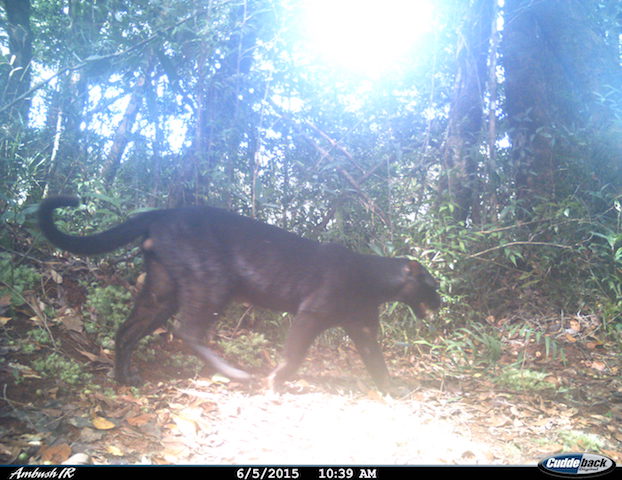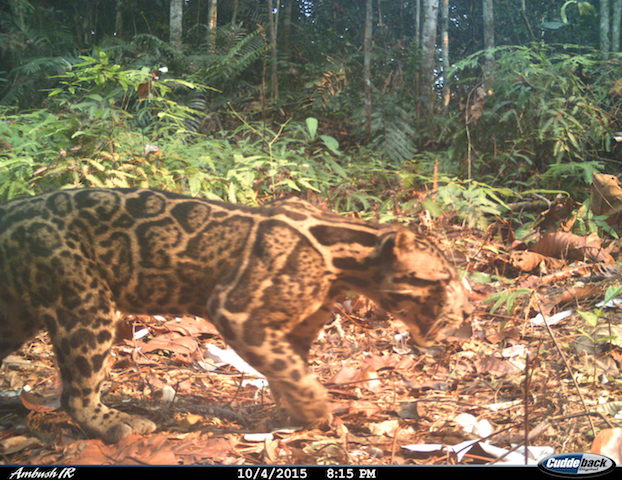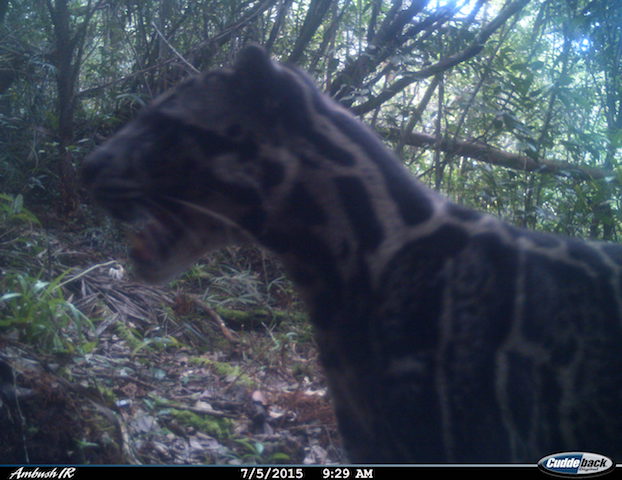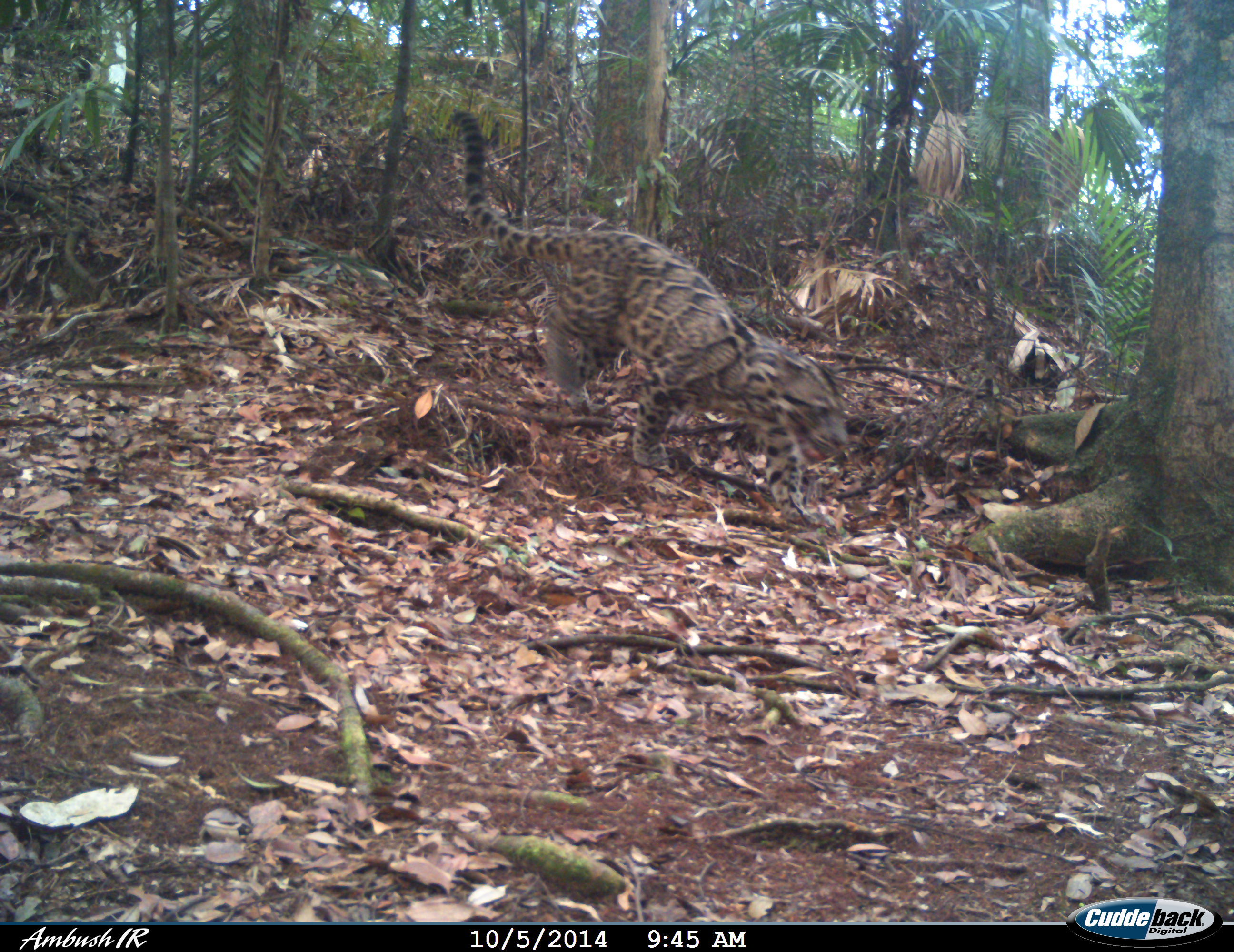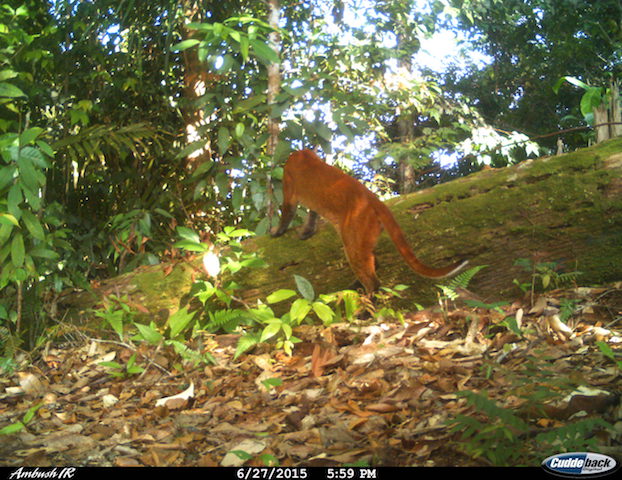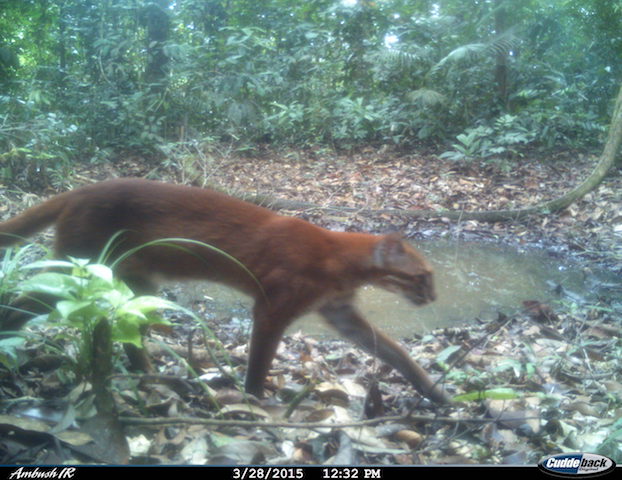News
New light flashed on the little known endangered cats of Sumatra’s dark forests: a camera trapping study of clouded leopards and golden cats.
Studying invisible animals takes time but turns out to be worth it, reflects David Macdonald as WildCRU and collaborators publish the findings of a remarkable study of Sunda clouded leopards in Sumatra. Its getting towards a decade since I decided to expand our long-term study of clouded leopards in Sabah not only throughout Borneo but also Sumatra and also, for the mainland species, throughout SE Asia. But, while not strictly speaking invisible, clouded leopards might as well have been so, for all that it had been possible to learn about them until camera traps came on the scene. So, from Indonesia to Nepal, we have deployed camera traps to spy on clouded leopards, their guild and their prey. Its been a long job, but grid by grid, the results are emerging and today sees the publication of remarkable results from four Sumatran grids in a paper led by WildCRU’s Iding Haidir, and in collaboration with Matt Linkie, WildCRU’s long-time collaborator at WCS.
Iding led us in an intensive camera trap study conducted in the dense and evergreen rainforests of Sumatra. We asked, in particular, how two medium-sized and very elusive felids, the clouded leopard and Asian golden cat, coexist.
The research, published in PLoS One, discovered that the cameras tended to detect both species of felid in the same locations, and mainly where they also recorded their larger-bodied potential prey species. This would seem to throw them into competition. However, the two cats worked different shifts, so we deduce that they seem to achieve coexistence by being active at different times. This straightforward insight required extremely sophisticated analysis, led by Iding Haidir, who, as well as being a doctoral student at WildCRU, also works for the Indonesian Ministry of Environment and Forestry.
For technical aficionados, we used single-species occupancy modelling and Bayesian two-species occupancy modelling to investigate interspecific competition, and deployed Kernel density estimate for temporal interaction on both cats and their prey. Iding summarised, “Our finer spatial-overlap analyses found a high spatial overlap, thus indicate subtle spatial avoidance by both cats. However we found that clouded leopard was more nocturnal and had higher temporal overlap with the nocturnal prey, such as porcupine and mouse deer. The more diurnal golden cat had higher overlap with strictly diurnal prey such as the great argus pheasant”.
This study involved a heroic level of field effort, with over 28,000 camera trap nights being logged in one of Southeast Asia’s largest protected areas. Surveys ranged from humid lowlands to chilly mountains and underscore the rich abundance and importance of Kerinci Seblat National Park as a World Heritage Site. We think our paper has implications beyond Sumatra and clouded leopards: the modelling approach that we applied provides a replicable methodology for studying interspecific competition for other small-medium sized carnivore species in the tropics.
Read more about our Clouded Leopard Programme.
